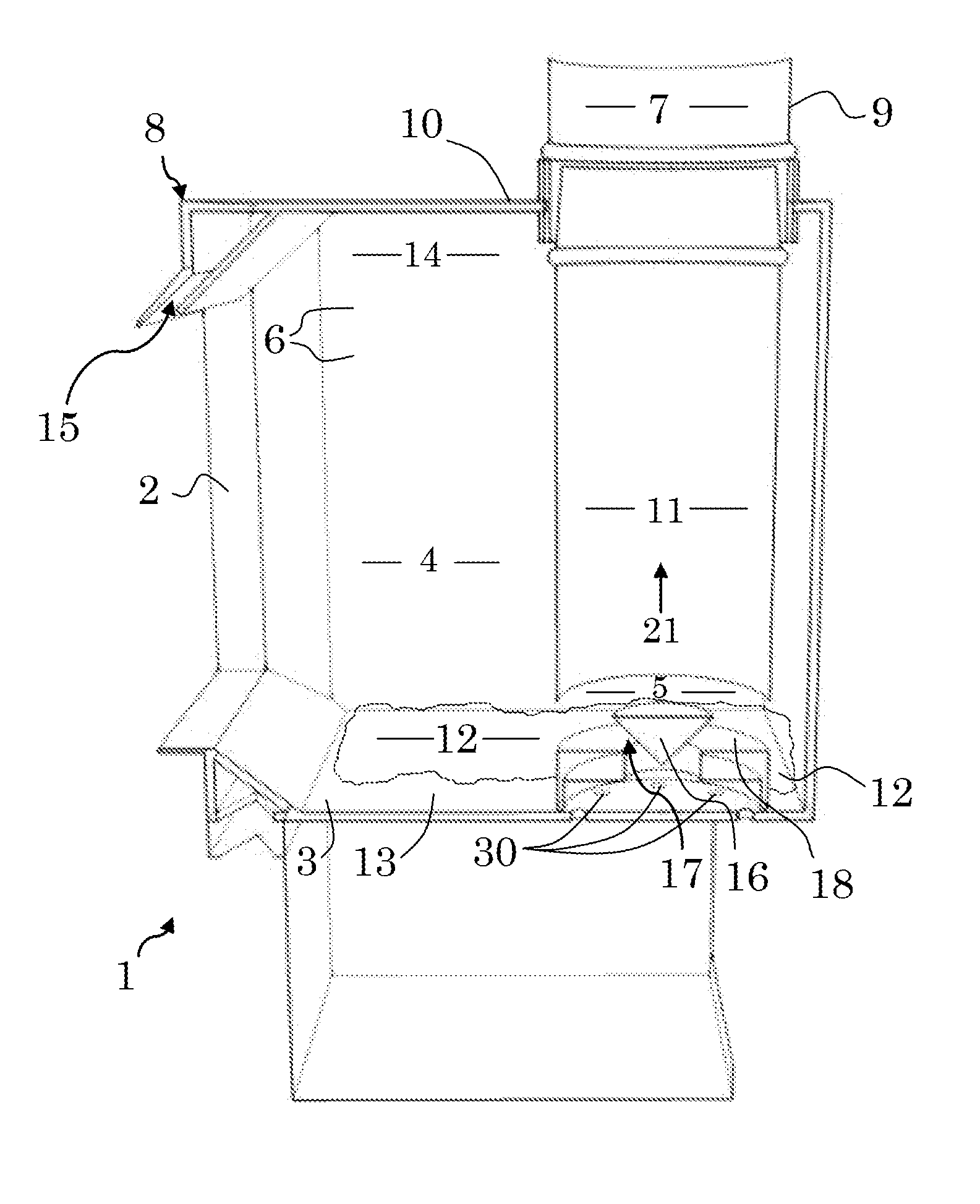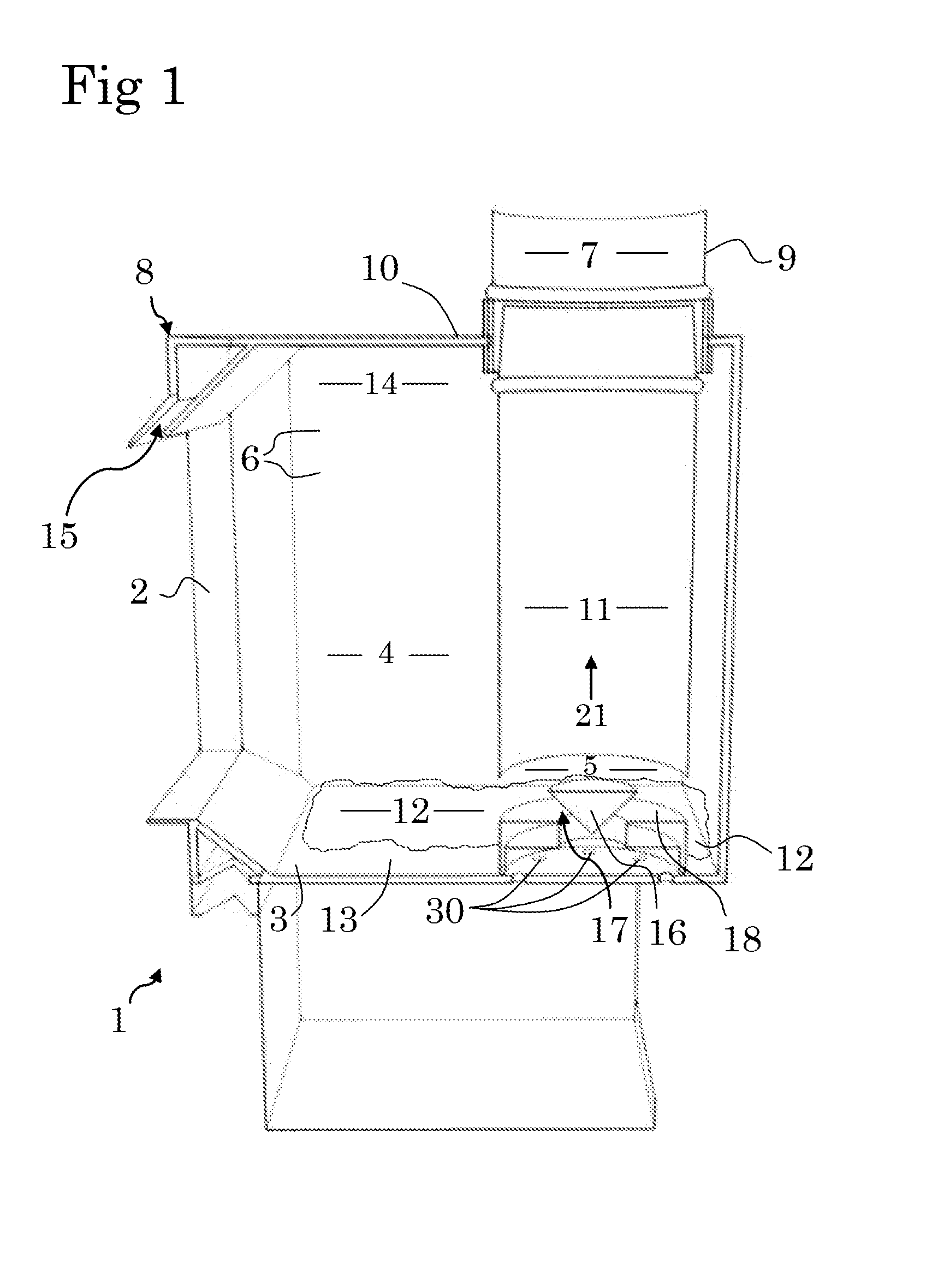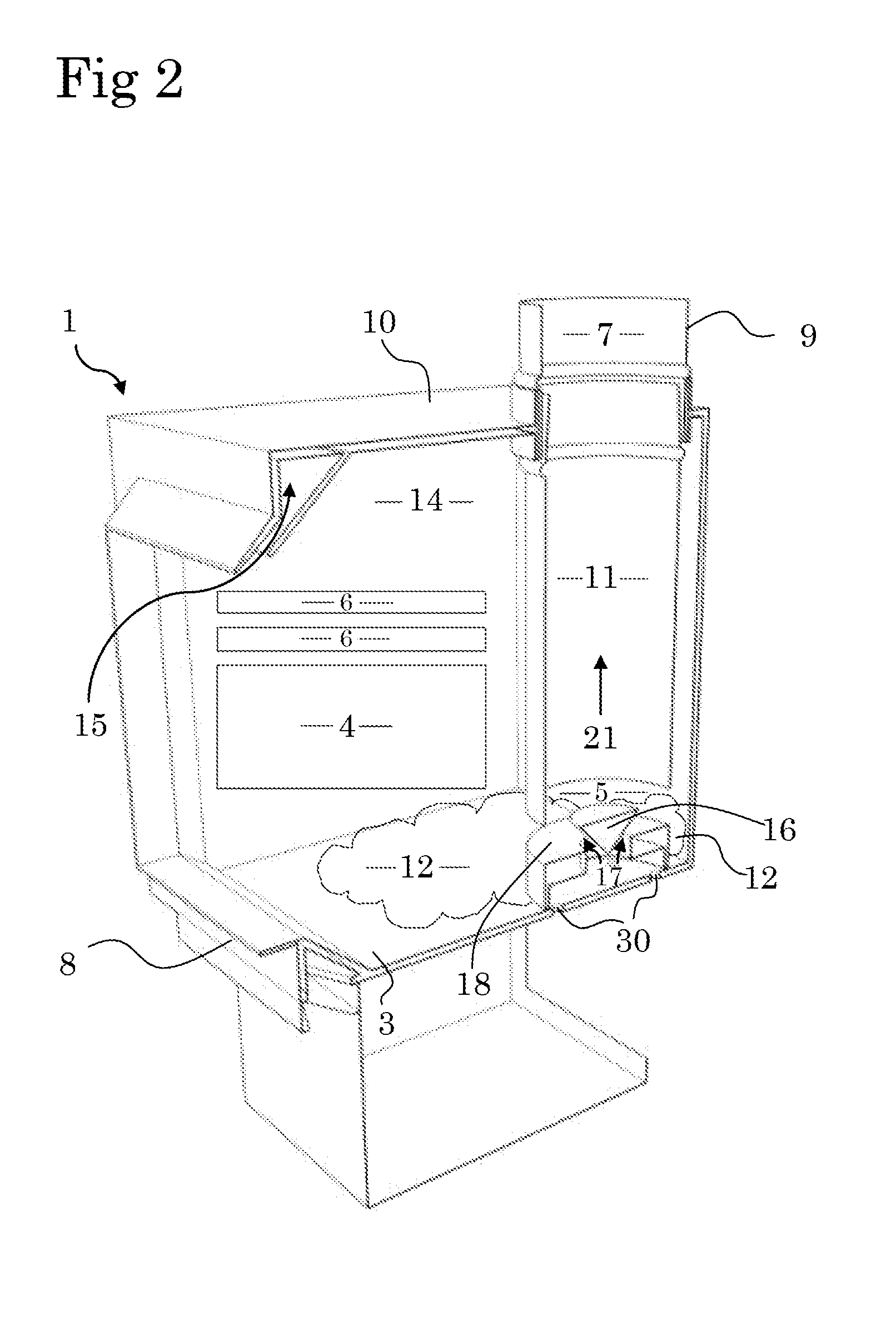An improved combustion system
a combustion system and combustion technology, applied in the field of improved combustion systems, can solve the problems of inefficient combustion of biomass fuel, high temperature, and large amount of smoke and particulate matter, and achieve the effects of enhancing combustion efficiency, reducing emissions, and maintaining high temperatures
- Summary
- Abstract
- Description
- Claims
- Application Information
AI Technical Summary
Benefits of technology
Problems solved by technology
Method used
Image
Examples
Embodiment Construction
[0115]The description of a preferred form of the invention to be provided herein, with reference to the accompanying drawings, is given purely by way of example and is not to be taken in any way as limiting the scope or extent of the invention.
DRAWINGS
[0116]FIG. 1: is a cut-away, side view of one possible embodiment of the present invention,
[0117]FIG. 2: is a perspective view of the embodiment illustrated in FIG. 1,
[0118]FIG. 3: is a cut-away, side view of another possible embodiment of the present invention,
[0119]FIG. 4: is a cut-away, side view of an embodiment of the present invention which has a rear exit flue,
[0120]FIG. 5: is a cut-away side view of an embodiment of the present invention which includes a tapered firebase,
[0121]FIG. 6: is a view of a control means, for use with the present invention.
DESCRIPTION OF PREFERRED EMBODIMENTS
[0122]Having regard to FIGS. 1 and 2 there is shown a combustion system generally indicated by arrow 1.
[0123]The combustion system 1 includes a fi...
PUM
 Login to View More
Login to View More Abstract
Description
Claims
Application Information
 Login to View More
Login to View More - R&D
- Intellectual Property
- Life Sciences
- Materials
- Tech Scout
- Unparalleled Data Quality
- Higher Quality Content
- 60% Fewer Hallucinations
Browse by: Latest US Patents, China's latest patents, Technical Efficacy Thesaurus, Application Domain, Technology Topic, Popular Technical Reports.
© 2025 PatSnap. All rights reserved.Legal|Privacy policy|Modern Slavery Act Transparency Statement|Sitemap|About US| Contact US: help@patsnap.com



